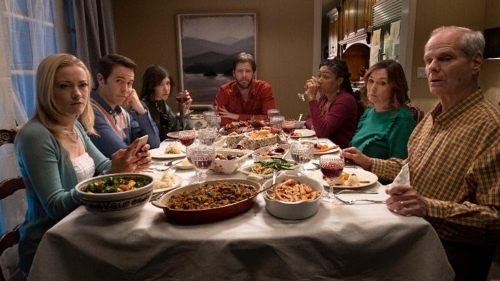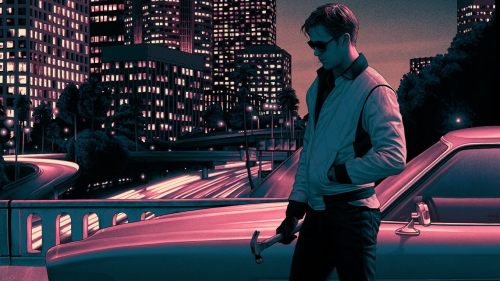WHITE GIRL Gone Wild
White Girl is about a young white woman from middle America who moves to New York unsupervised for college, expands her social circle, hooks up for drugs, pleasure and favors, and is sexually assaulted by a character who could play her father. The film was compared to the '90s cautionary movie Kids, where another white girl had her break-out role: Chloe Sevigny. Killer Films, the production company that made the film Kids, has a production credit in White Girl too.
The film is a semi-autobiographical directorial debut by Elizabeth Wood and features Morgan Saylor as Leah, a White Girl who moves into an apartment in Ridgewood, Brooklyn with an equally white roommate. Like Kids, there are frank depictions of sex, drug use and nihilistic behavior.
Ridgewood is a real place, and its gentrification is well documented in the real world. The gentrification in the world of White Girl is at first contained to the inside of Leah's apartment. She and her white friends hang out indoors and don't talk to the long-time residents outside, not even during the day. Leah feels daring one night, so she goes outside one night to ask a young man of Puerto Rican descent named Blue for drugs. Soon a romantic relationship begins between her and Blue and she is entangled with him and his friends.
One day Blue brings Leah along on a trip to pick up cocaine from his supplier and gets caught by an undercover cop with a small amount of drugs. The brick of cocaine Blue obtained with intent to sell is still with Leah. Now Leah is on a mission to sell the cocaine to pay Blue’s lawyer and Blue’s violent supplier.
We see Leah haphazardly chopping and measuring the cocaine, selling as she parties and partakes. At first Blue’s friends are willing to help her. They have more on-the-job experience, and they want to help Blue. This soon ends after one of them is beaten at a party and they recognize the danger Leah thoughtlessly puts them all in.
The danger is real, and the film doesn’t minimize it. Blue and his friends all see it. It’s never clear in the film as to whether Leah sees it too, but then again, she has a key asset: her white invincibility.
It’s appropriate that the film is set in New York, where stop-and-frisk laws disproportionally affect non white citizens, but don’t lead to any real decrease in crime. It’s common knowledge now blacks and Latinos are significantly more likely to face jail time for drug-related activities than whites. Drug use is common among college students, as Van Jones commented, even (or especially) among the universities with the most privileged students. Whiteness and class play a part in who faces the repercussions of being caught with drugs, but whiteness plays the biggest role. If you are white, you are not only less likely to get caught but there is also less risk of jail time if you are.
You don’t even have to tell White Girls like Leah about this. She is allowed to revel in nihilistic behavior without fear of the consequences. She knows she can, most likely from a lifetime of absorbing socio-cultural rules about whiteness and benefiting from them. People that look like her and come from families like hers don’t go to jail. They can make mistakes. They can fail, grandly.
Just look at Donald Trump, who is being monitored constantly for business dealings that are now improper and illegal because he is the President of the United State, who bragged about being able to get away with the crime of sexual assault on tape and who claims to be a successful businessman despite his multiple bankruptcies. His failures aren’t even limited to his professional life; while having multiple wives and extended families is not a failure, abusing your family is. There is a long trail of failure behind him.
After seeing these failures laid before them, Trump’s voters decided to give him the opportunity to fail spectacularly again with the highest government position in the land. Whiteness gives Donald Trump and his voters rose-colored glasses with blinders. Whiteness lets them see future potential despite the documentation of his past failings.
At the end of White Girl, Blue is back in a police car shortly after being released from prison. This time it’s for assaulting the drug supplier who violently came after Leah. This also happens just after Blue proposes marriage to Leah, who is clearly ambivalent about this next step in their relationship. Blue knows second chances are few and far between, and he must hold onto Leah. However, Leah can still see her future, full of second chances, and it’s one that doesn’t have to include Blue. Once Blue is arrested, presumably for good, her second chance is secured. In the next scene she's in a college classroom filled with other (mostly white) students.
Like Kids, White Girl was advertised as a wake-up call for parents about to send their kids off to college, and a cautionary tale for young women. Reviews claimed, "White Girl might be romantic, but it's not romanticized." Leah's behavior is more reckless and hedonistic than anything Blue is seen doing. However, it's still people like Blue and their worlds that will be viewed as the corrupting influence.
White Girl is a cautionary tale, but it’s not one for white kids or their parents. It’s for the non-white, poorer youths and their families. When failure comes their way, it’s the White Girls who get second chances, not them.



